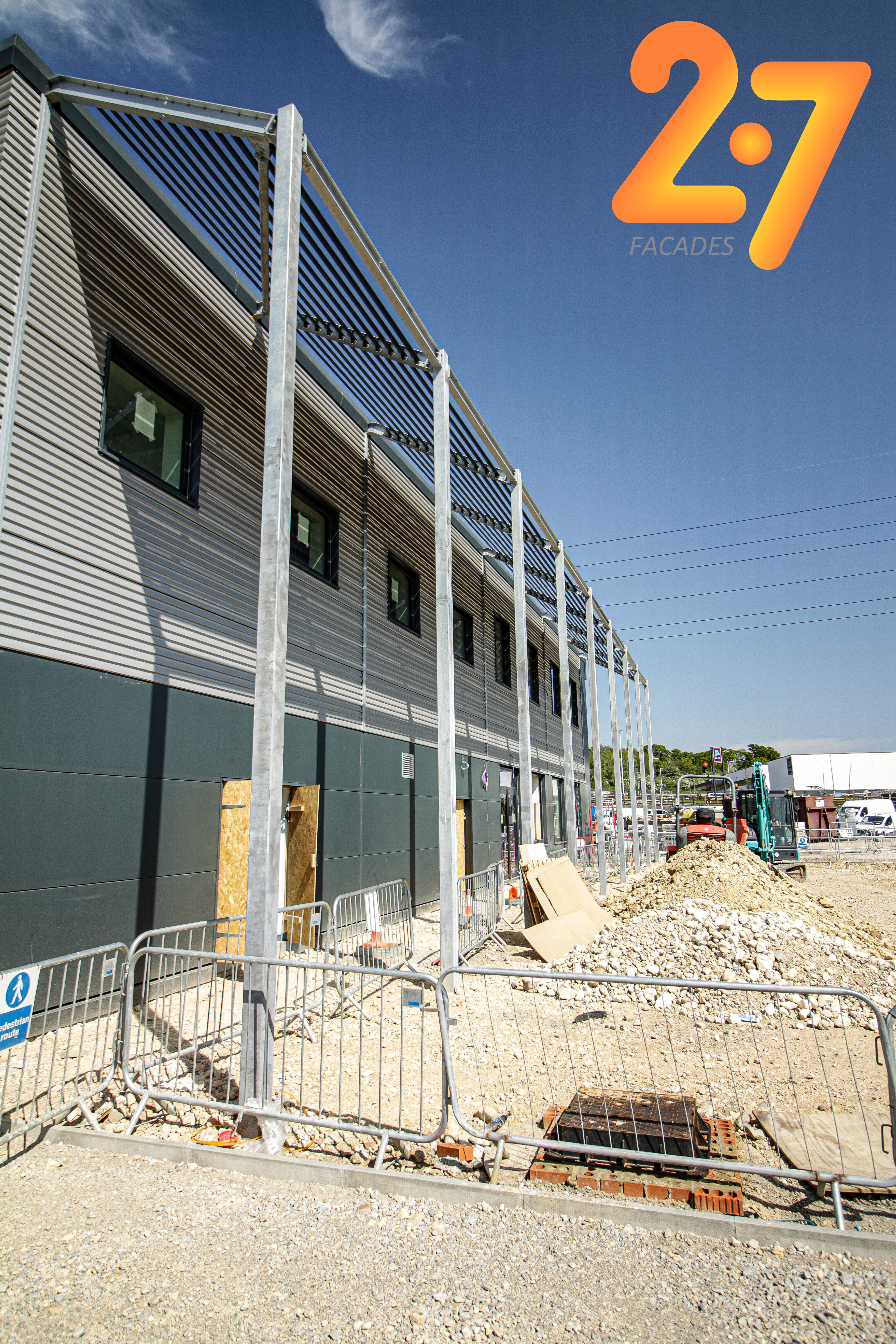Brise soleil
Solar gain is short wave radiation from the sun that heats a building, either directly through an opening such as a window, or indirectly through the fabric of the building. Very broadly, solar gain can be beneficial in cooler climates when it can be used to passively heat buildings. However, too much solar gain can cause overheating and for this reason, Part L of the UK building regulations places restrictions on the amount of glazing that can be used in buildings.
The situation is complicated by the variation of conditions throughout the day and year and the movement of the sun, which can mean that solar gain is beneficial in the morning and evening, or during the winter, but problematic during the middle of the day or in the summer.
Brise soleil can be used to allow low-level sun to enter a building in the mornings, evenings and during winter when it can help heat and light the building, but to shade higher sun during the middle of the day and during the summer which tends to be ‘hotter’, brighter and less beneficial.
Brise soleil are external shading structures which can be fitted over the entire exterior of a building or solely over the windows. They can range from simple lattices or patterned concrete structures, to mechanical baffles, offering architects a practical solution for controlling year round solar radiation, reducing energy costs and helping to reduce glare.
A typical brise soleil extends horizontally from the exterior of glazed sections on buildings to help reduce glare and prevent the building from overheating by reflecting direct, high-level light, but transmitting diffuse and low-level light. Louvres are often incorporated into brise soleil that can be angled to optimise the shading provided depending on the local conditions and the design of the building.
Brise Soleil can be fixed or motorised (automatic or manual), and can be part of a curtain walling system or independent structures. As they are designed to intercept the strong summer sun, they can also incorporate photovoltaic cells.
The southern sides of buildings typically require horizontal, angled baffles to block the high summer sun. For the east and west facing sides of a building a motorised fin system can be used, to follow the sun and actively control the solar gain of the building. This allows optimum protection at the appropriate time of day and year.
[edit] Related articles on Designing Buildings Wiki.
Featured articles and news
The UK's Modern Industrial Strategy: A 10 year plan
Previous consultation criticism, current key elements and general support with some persisting reservations.
Building Safety Regulator reforms
New roles, new staff and a new fast track service pave the way for a single construction regulator.
Architectural Technologist CPDs and Communications
CIAT CPD… and how you can do it!
Cooling centres and cool spaces
Managing extreme heat in cities by directing the public to places for heat stress relief and water sources.
Winter gardens: A brief history and warm variations
Extending the season with glass in different forms and terms.
Restoring Great Yarmouth's Winter Gardens
Transforming one of the least sustainable constructions imaginable.
Construction Skills Mission Board launch sector drive
Newly formed government and industry collaboration set strategy for recruiting an additional 100,000 construction workers a year.
New Architects Code comes into effect in September 2025
ARB Architects Code of Conduct and Practice available with ongoing consultation regarding guidance.
Welsh Skills Body (Medr) launches ambitious plan
The new skills body brings together funding and regulation of tertiary education and research for the devolved nation.
Paul Gandy FCIOB announced as next CIOB President
Former Tilbury Douglas CEO takes helm.
UK Infrastructure: A 10 Year Strategy. In brief with reactions
With the National Infrastructure and Service Transformation Authority (NISTA).
Ebenezer Howard: inventor of the garden city. Book review.
The Grenfell Tower fire, eight years on
A time to pause and reflect as Dubai tower block fire reported just before anniversary.
Airtightness Topic Guide BSRIA TG 27/2025
Explaining the basics of airtightness, what it is, why it's important, when it's required and how it's carried out.
Construction contract awards hit lowest point of 2025
Plummeting for second consecutive month, intensifying concerns for housing and infrastructure goals.
Understanding Mental Health in the Built Environment 2025
Examining the state of mental health in construction, shedding light on levels of stress, anxiety and depression.






















